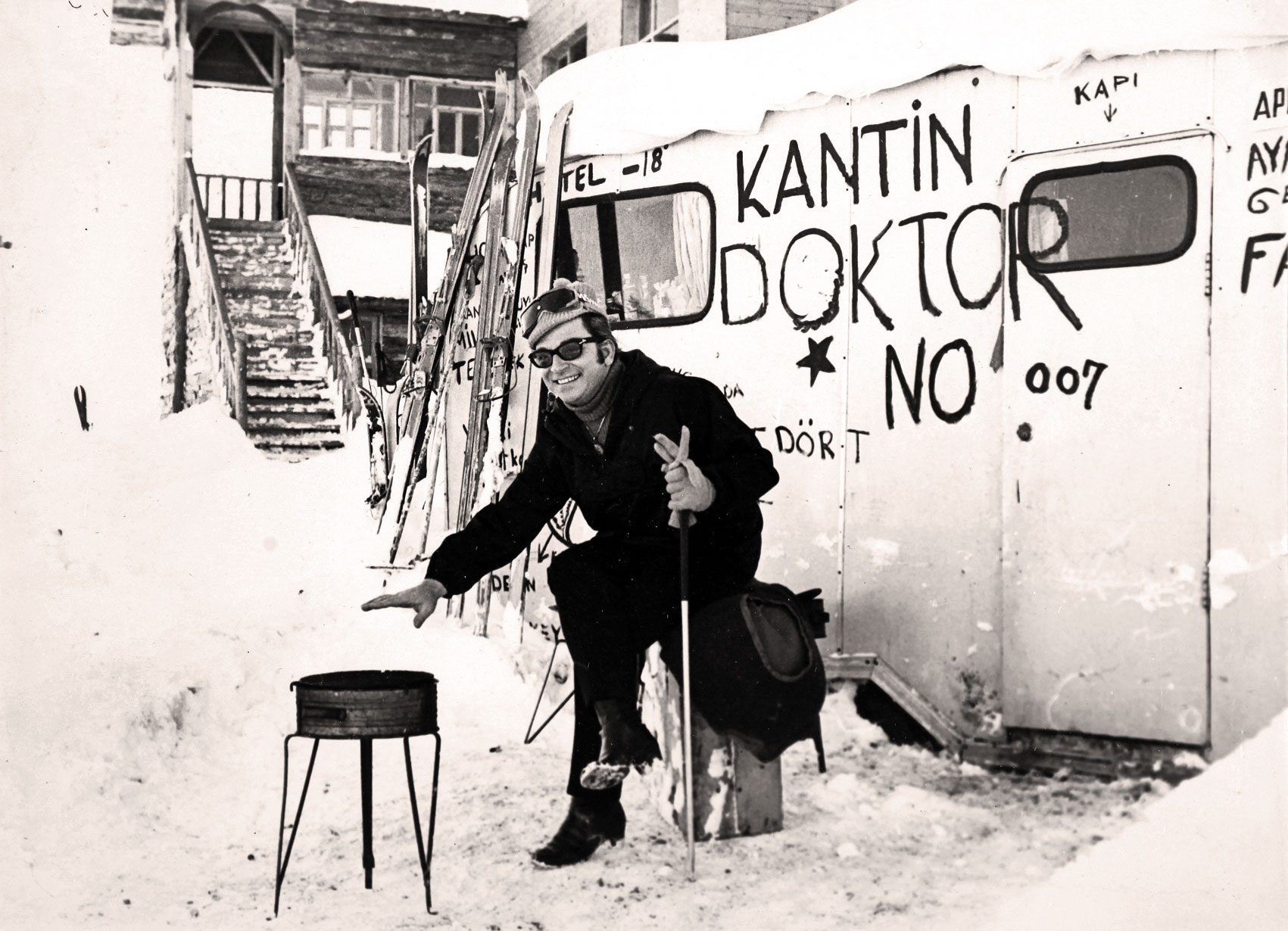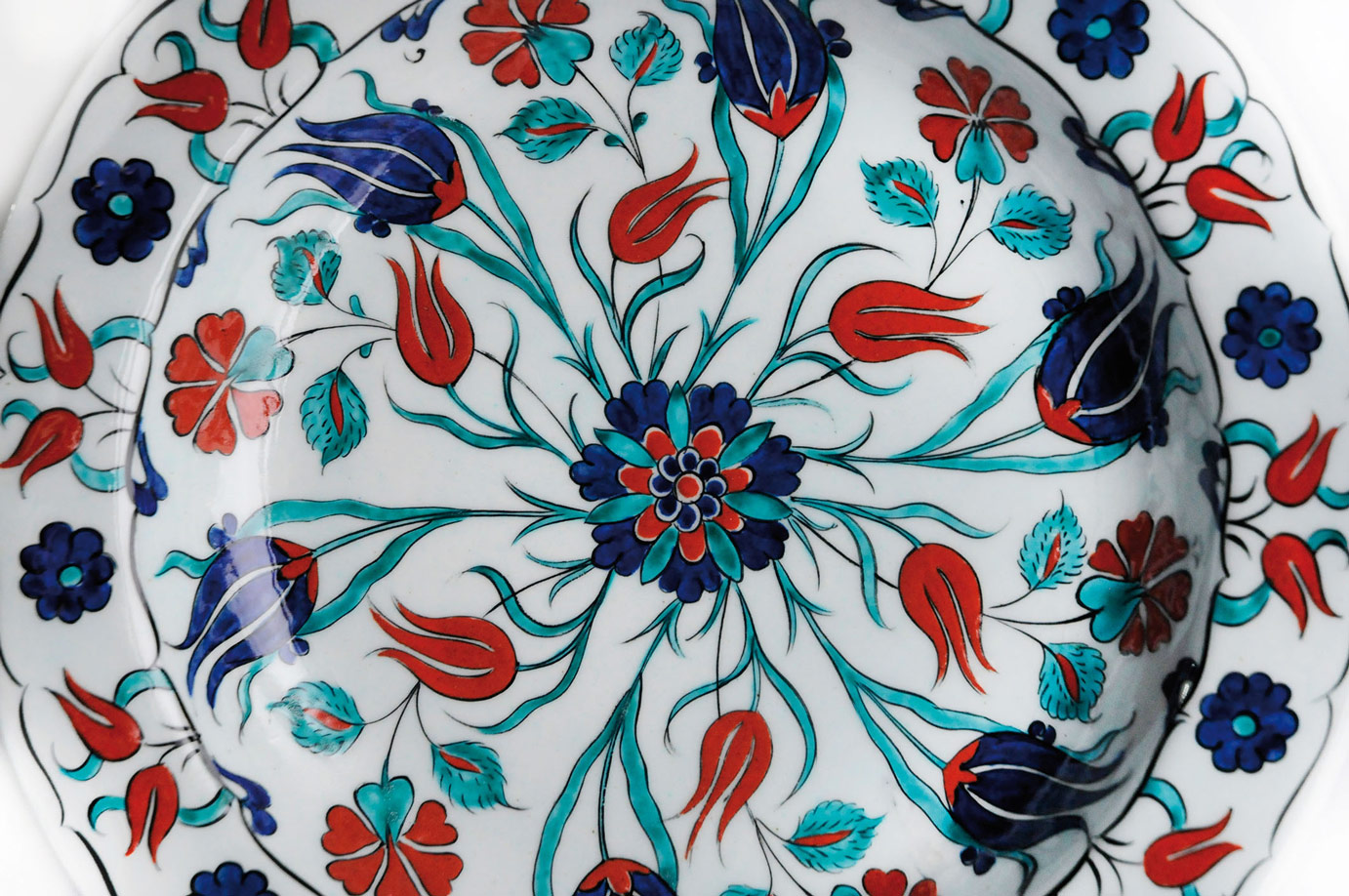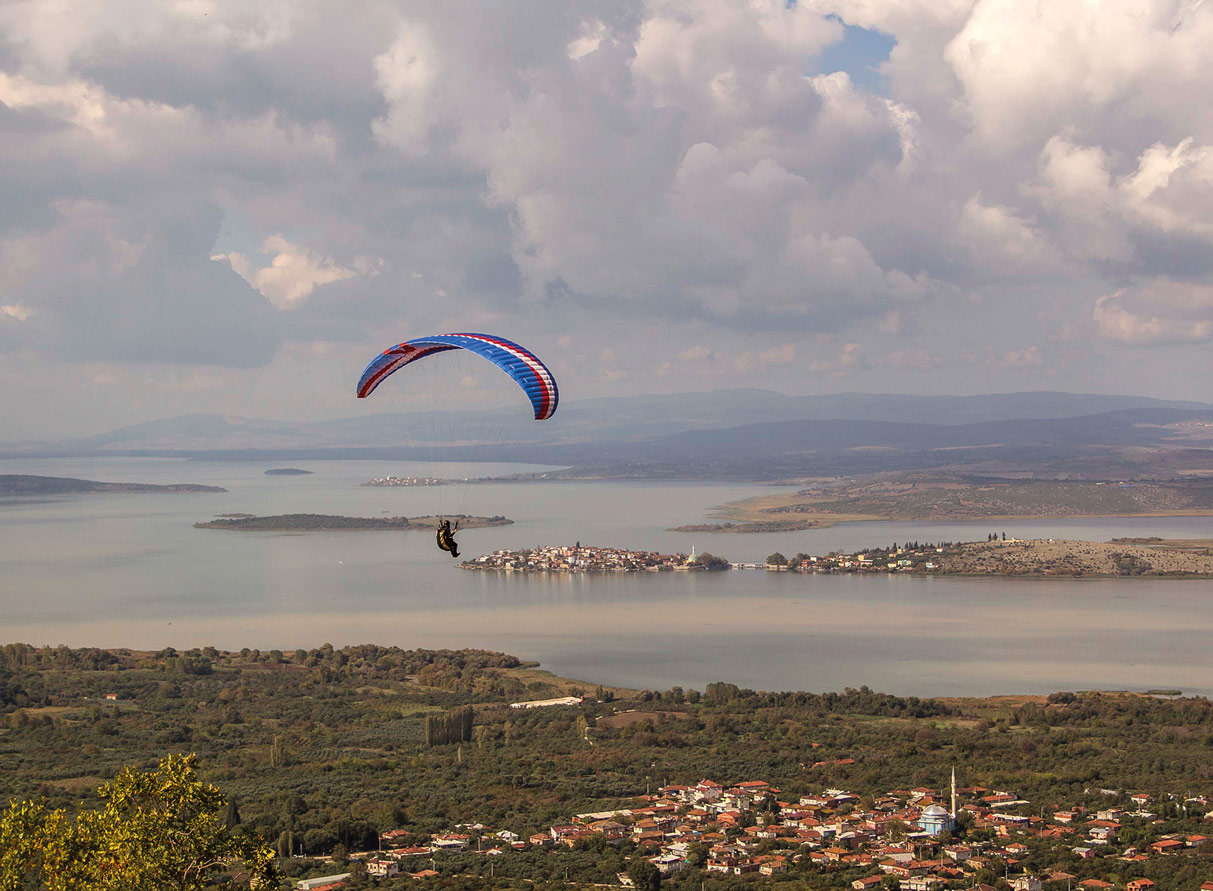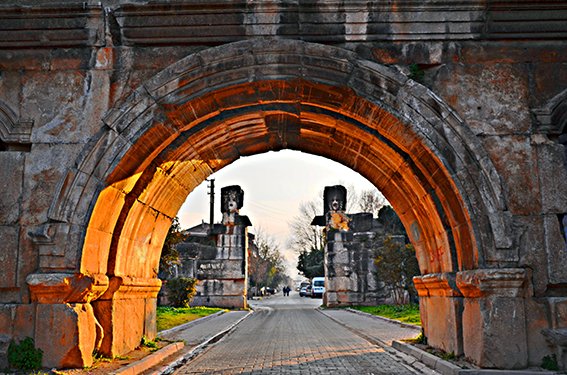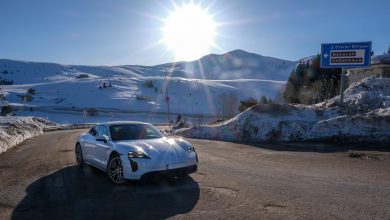Uludağ’dan efsanevi notlar…
Uludağ’dan efsanevi notlar…
Keşişlerin sığınağı, tanrıların dağı, Bursa efsanelerinin kaynağı Uludağ… Sakladığı sırlarla, biriktirdiği anılarla yüzlerce yıldır yaşayan bir bilge…
Her dağın efsanelerle bezenmiş; masal devleri, yağmur, fırtına, yıldırım tanrılarıyla kurgulanmış bir hikâyesi vardır. Tanrıların kutsal dağı, Hıristiyan keşişlerin, Müslüman dervişlerin sığınağı olan Uludağ, Anadolu’daki dağlar arasında sakladığı sırları, biriktirdiği anılar ve ilkleri ile ayrı bir yerde. Uludağ hakkında bugüne dek söylenen sayısız sözün, anlatılan nice hikâyelerin, yazılan sayfalar dolusu kitapların arasında dolaştık, efsane dağın efsaneleri ve ilkleri ile ilgili notlar alıp sizin için bir seçki yaptık.

Uludağ’dan efsanevi notlar…
- Olympos, Yunan mitolojisinde tanrıların ve tanrıçaların Ambrosia yiyip nektar içtikleri, şölenler düzenledikleri bir dağ olarak tanımlanır. Antik çağ tarihçilerinden Halikarnassoslu Herodot’a göre “hep parlayan” anlamındaki Olympos Dağı Yunanistan’da “Olympos des dieux” (Tanrıların Olymp’i) adıyla onurlandırılan Teselya değil Bursa’nın veli nimeti Uludağ’dır.
- Yunanlı filozof Xenophon’a göre ormanları vahşi kabilelerin yurdu; aslan, kaplan, vaşak, panter gibi yabani, korkunç hayvanların barınağıdır Uludağ. Zenginliğiyle ünlü Lidya Kralı Kroisos’un (Karun) oğlu Atys’in, bir domuz avı sırasında Frig Kralı Midas’ın yeğeni Adrastos’u bu dağın eteklerinde, mızrağıyla öldürdüğü bilinir.

- Ünlü tarihçi Homeros, İlyada ve Odysseia’da Zeus ve diğer tanrıların Troya savaşını “birçok doruğu olan, bulutların altında, tanrılar ve tanrıçaların havayı soludukları bir dağ” olarak tanımladığı Olympos’un zirvesinden seyrettiklerini anlatır.
- İ.Ö. 4. yüzyıldan sonra şehre bakan kuzeyi Bithynian Olympos, batısı ise Mysios Olympos olarak bilinir. Lykialılar, Phrygialılar ve Maionialılar ile birlikte müttefik kuvvetler olarak Akhalılar’a karşı savaşan Mysialılar Troia’dan mağlup dönseler de en azından dağın paylaşımı konusunda Bithynialılar’a karşı üstünlük sağlarlar ve dağ “Olympos Mysios” olarak anılmaya, öyle bilinmeye başlanır. (Strabon, 12, 8,0; Herodotos, 1.36)

- Coğrafyacı Strabon, “Geographumena” (Coğrafya) adlı eserinde dağın Mysialılar ile özdeşleştiğini ve yoğun bir Mysialı nüfusu barındırdığı için bu dağa Olympos Mysios denildiğini belirtir. Mysia’nın, Lydce kayın ağacı anlamına geldiğini ve Mysialıların oturduğu Olympos çevresinde çok fazla kayın ağacı olduğunu Lydialı Xanthos ile Eleialı Menekrates’ten aktarır. (Strabon, Geographika 12,8,3)
- Mysialılar ve Bithynialılardan sonra Romalılar da Olympos’u kutsal bilip saygı gösterirler. Olymposlu tanrılar ve tanrıçalar adına tapınaklar, anıtlar dikerler.
- Hıristiyanlığın, Roma İmparatorluğu’nun eşit dinlerden biri olarak kabul edilmesiyle Mitolojinin Olympos’u 5. yüzyıldan sonra tepeleri tıraşlı ve kıldan gömlekli Hıristiyan keşişlerin inzivaya çekildikleri Oros Ton Kalogeron (Keşiş Dağı) olur.
- İ.S. 726’dan sonra resimlerle ibadeti yasaklayan İmparator 3. Leon’un zulmünden kaçan Hıristiyanların mekânıdır. 110 yıldan fazla süren ve çok canlara mal olan bu din savaşında Olympos manastırları imparatora karşı direnişiyle ün kazanır.

- Kril Alfabesi’nin temeli olan Glagolitik Alfabe’nin Constantin Cyril ve Methodius kardeşler tarafından Fidyekızık Köyü üstlerindeki Polihron Manastırı’nda yazıldığına dair ciddi bulgular var.
- İkona yanlılarının kutsal dağı, 14. yüzyıldan itibaren başı sarıklı, yeşil cüppeli dervişlerin yurdu, Ruhban-ı Cebel’dir. Bazı kaynaklar bölgeye Türkler geldiğinde burada 147 manastır olduğunu ileri sürüyor.
- Yüzlerce yıl önce Bursa’ya gelen ya da Bursa’dan geçen yerli ve yabancı seyyahlar Keşiş Dağı’nı bir cennet bahçesine benzetirlermiş.
- Bursa’nın fethinden 314 yıl sonra, 1640 yılında Okçuzade Ahmed Çelebi ile Bursa’ya gelen Evliya Çelebi, Seyahatname’sinde Keşiş Dağı’na yaptığı iki günlük geziyi anlatır ve “Ab-ı Hayat”a benzettiği pınarlardan, alabalıklarla dolu derelerden, derin vadilerden, yemyeşil ormanlardan söz eder.

- Evliya Çelebi, Türklerin Uludağ’a “Keşiş Dağı” yakıştırmasını ünlü seyahatnamesinde şöyle açıklıyor: “Bu dağa Keşiş Dağı denilmesinin sebebi, Ayasofya’daki patrik ve rahiplerin, perhiz ile uçarak gelip bu dağda dinlenmeleridir.” Evliya Çelebi bu kaydı düştüğüne göre, 17. yüzyılda bile, Osmanlı İmparatorluğu’nun Müslüman halkı arasında keşişlerin kerametine ve özellikle de bu dağda cidden “hikmet” gösterdiklerine hala inanılıyordu.
- Osmanlının başkentine gelen yerli ve yabancı seyyahlar bir günlüğüne de olsa cennet bahçesine benzettikleri Keşiş Dağı’na çıkarlar. Ünlü gezgin Charles Texier, Bursa gezisi sırasında yamaçlardan yukarılara doğru çıkar ve insanda şaşkınlık uyandıracak ölçüde güzel manzaralar görür, kestane ve çam ormanlarında dolaşır.
- 1835’te Keşiş Dağı zirvesinde çubuk içen İngiliz Yazar Julia Pardoe, 18. yüzyılın İstanbul ve Bursa’sını anlattığı “Sultanın Şehri ve Türklerin Aile Hayatındaki Gelenekleri” adlı kitabında “Doğuya yolculuk eden, Avrupa’da generallerle yemekte bulunan, Asya’da beylerle pilav yiyen, sarayları gören, boğazda bir kayıkla süzülüp geçen bir insan, Anadolu’nun her yöresini gördükten sonra, Keşiş Dağı’nın doruğunda bir çubuk içmeden dönerse, yerlilerce, hiçbir şey görmemiş demektir” cümlesiyle Bursalıların dağa olan sevgisini anlatır.
- Marie de Launay, Keşiş Dağı’nın hikâyesini şu satırlarla anlatır; “Bithynia Hükümeti’nin Sultanı olan Prusias’ın devrinde, Yunan ve Roma tarihçileri Olimpos veya Mysie Olimpos’u olarak anmışlardır. Ancak Bithynia Olimpos’u demek daha uygun olur. Keşiş Dağı adı ise bu dağı diğer Olimpos dağlarından net bir şekilde ayırmaktadır. Bu dağın, önceleri tanrıların barındığı yer olduğu ve Zeus’un karakaşlı yağmur tanrısının, bulutları toplayarak yıldırım yaptığına inanılırdı. Bu tanrıların burada bir tapınak yaptırdığı da söylenir.” (Brusa ve Civarı, İstanbul, 1298/1880-81)
- Bursa’nın fethinden sonra padişahın görevlendirdiği Bursalı Buzcu Beyleri yüzlerce yıl boyunca Osmanlı sarayına Uludağ Ulubuzluk’tan kestikleri kar ve buzu taşırlar.
- Sarayın aşşabları (Bitki alimleri) üçüncü cemrenin düşmesiyle birlikte şifalı bitki toplamak için Keşiş Dağı yollarına düşerler.
- Kereste ticareti bölge ekonomisinin temelidir. Keşiş Dağı’ndan indirilen ağaçlarla Osmanlı tersanelerinde Marmara kancabaşları, kalyonlar inşa edilir. Fırınların, dokumacıların, hanelerin ihtiyacı olan odunlar Sultan Orhan’ın eşi Nilüfer Hatun’un adını taşıyan nehir yoluyla indirilir Bursa’ya.
- Uludağ bitki çeşitliliği nedeniyle yerli ve yabancı birçok botanik araştırmacısının dikkatini çeker. 1870 yılında Mekteb-i Tıbbiye-i Şahane’de Macarlı Dr. Abdullah Bey (Dr. Karl Eduard Hammerschmidt) tarafından kurulan Doğa Tarihi Müzesi’nde Bursa yakınlarından ve Uludağ’dan toplanan yaklaşık 300 türe ait 1000 bitki örneği koleksiyonu yer alıyordu. Dr. Abdullah Bey, Doğa Tarihi Müzesi’nde Uludağ alpin bölge bitkileri ve Bursa civarından toplanmış bitkileri yeni bir metoda göre düzenleyerek 20 camlı tabloda sergilemiş ve bu metot, 1867 Paris Uluslararası Sergisi’nde bronz madalya ile ödüllendirilmişti. Bugüne kadar yapılan çalışmalarda Uludağ florasını 171’i endemik olmak üzere 1320 bitki türünün oluşturduğu belirlendi.
- Bizans ve Osmanlı’nın Keşiş Dağı, fetihten 599 yıl sonra, 24 Eylül 1925 tarihinde Bursa ve İstanbul Vilayetleri Coğrafya Komisyonları’nın birlikte gerçekleştirdikleri 10 günlük gezi sonrası Dr. Osman Şevki Bey’in önerisiyle “Uludağ” adını aldı.
Kaynak kişi: Serdar Kuşku / Uludağ’dan efsanevi notlar…

Legendary notes from Uludağ…
Uludağ, haven of monks, mountain of gods, source of the legends of Bursa… A sage that has been living for centuries with the secrets it hides and the memories it accumulates…
Every mountain has a story that is shaped with legends, fairy tale giants, rain, storm and lightning gods. Uludağ stands apart from the other mountains in Anatolia with its secrets, memories and firsts as the sacred mountain of the gods and haven of Muslim dervishes. We traversed the countless words on Uludağ, many stories and notes on the legends and the firsts of this legendary mountain that fill up pages and pages after which we made a compilation for you.
- Olympos is defined as a mountain where the gods and goddesses in Greek mythology eat Ambrosia, drink nectar and organize feasts. According to Herodotus of Halicarnassos, a historian of the Ancient age, Mount Olympos meaning “one that always shines” is not Thessaly in Greece that is honored with the name of “Olympos des dieux” (Olymp of the Gods) but Uludağ, the treasured mountain of Bursa.
- Uludağ which is the home of wild forest tribes according to Greek philosopher Xenophon and is also a haven for wild animals such as lions, tigers, lynxes and panthers. It is known that this was the place where Atys, the son of Lydian King Kroisos (Karun) renowned with his wealth, killed Adrastos, nephew of the Phyrgian King Midas during a boar hunt.
- Famous historian Homeros tells in his Illiad and Odysseia that Zeus and the other gods watched the war of Troy from the peak of Olympos defined as “a mountain under the clouds with many peaks where gods and goddesses breathe”.
- Its north face overlooking the city was known as Bithynian Olympos after the 4th century B.C., whereas the west face was known as Mysios Olympos. Even though the Mysians that fought agains the Achaeans together with the Lykians, Phyrgians and Maionians returned from Troy defeated, they were at least able to have an edge over the Bithynians for the sharing of the mountain which from then on becomes known as “Olympos Mysios”. (Strabon, 12, 8,0; Herodotos, 1.36)
- Geographer Strabon tells in his book entitled “Geographumena” (Geography) that the mountain has been identified with the Mysians and thus the name of Olympos Mysios was given due to the large Mysian population it hosted. He cites from Xanthos of Lydia and Menecrates of Eleia that Mysia means beech tree in the Lydian tongue and that there are many beech trees around Olympos where the Mysians live (Strabon, Geographika 12,8,3).
- After the Mysians and Bithynians, the Romans also consider Olympos as sacred. They build temples and monuments in the name of the Olympian gods and goddesses.
- After Christianity was accepted as one of the religions of the Roman Empire, Olympos of mythology turns into Oros Ton Kalogeron (Mountain of Monks) where monks who shave the tops of their heads and wear hair-shirts secluded themselves after the 5th
- It is the home of Christians escaping from the tyrannies of Emperor Leon the 3rd who banned worshipping with paintings after 726 A.C. Olympos monks become famous with their resistance against the emperor during this religion war that lasted more than 110 years and took many lives.
- There are significant findings indicating that the Glagolithic Alphabet which is the basis of the Cyrillic Alphabet was written by Constantin Cyril and Methodius siblings in the Polihron Monastery above the Fidyekızık Village.
- It is Ruhban-I Cebel (Mountain of priests), the sacred mountain of icon worshippers, home of dervishes with green gowns and turbans starting from the 14th According to some sources, it is indicated that there were 147 monasteries here when the Turks came to the region.
- It is told that the local and foreign travelers who came to or passed by Bursa centuries ago resembled the Mountain of Monks to a garden of eden.
- Evliya Çelebi who visits Bursa together with Okçuzade Ahmed Çelebi in 1640, 314 years after the conquest of Bursa tells of a two day trip to the Mountain of Monks in his travelogue and talks about springs which he resembles to “Adam’s Wine”, rivers full of trouts, deep valleys and green forests.
- Evliya Çelebi explains the alias of “Mountain of Monks” for Uludağ as such in his famous travelogue: “The reason why this mountain is called the Mountain of Monks is that the patriarchs and monks in Hagia Sophia fly here by way of fasting where they rest.” Since Evliya Çelebi wrote this note down, it can be indicated that Muslim folk still believed the wonders of monks and that they still displayed “miracles” on this mountain.
- Even if for one day, local and foreign travelers who visited the capital city of the Ottoman Empire went up the Monk Mountain which they resemble the Garden of Eden. The famous traveler Charles Texier climbs up the foothills of the mountain during his Bursa trip and comes across enchanting views, walks around chestnut and pine forests.
- English author Julia Pardoe who smoked a pipe at the peak of Mount Keşiş on 1835 states in the book entitled “The City of the Sultan and the Traditions of the Turks in the Family Tradition” depicting life in 18th century İstanbul and Bursa that, “Locals say that those who have travelled East, attended dinner parties with generals in Europe, ate rice with Beys in Asia, visited palaces, sailed across the Bosphorus in a boat have not seen anything unless they smoked a pipe on the peak of Mount Keşiş” thus indicating the love of the locals of Bursa for their mountain.
- Marie de Launay tells of the story of Mount Keşiş as such; “During the reign of Prusias, the Sultan of the Bithynia State, the mountain was known by the Roman historians as Olympos or Mysie Olimpos. However, it would be better to call it Bithynia Olimpos. Whereas Mount Keşiş clearly separates this mountain from other Olympos mountains. It was previously believed that this mountain was the home of the gods and that the black browed rain god of Zeus collected all the clouds here and made thunder. It is also said that the gods have made a temple here.” (Bursa and its Environs, İstanbul, 1298/1880-81)
- Buzcu Beys from Bursa appointed by the Sultan following the conquest of Bursa carried the ice they cut from Uludağ Ulubuzluk to the Ottoman palace for centuries.
- The aşşabs (botanist) of the Palace head off to Mount Keşiş to collect herbs with the falling of the third cemre (radiations of heat believed to fall from the sky).
- Lumber trade makes up the foundation of the economy of the region. Marmara kancabaş boats and galleys are built at the Ottoman shipyards using lumber brought down from Mount Meşiş. The wood used by bakers, weavers and households are carried over to the city of Bursa over the river that is named after Miss Nilüfer, spouse of Sultan Orhan.
- Uludağ attracts the attention of many local and foreign botanists due to its plant diversity. There were about 1000 plant samples of 300 species collected from around Uludağ and Bursa in the Natural History Museum established by Hungarian Dr. Abdullah Bey (Dr. Karl Eduard Hammerschmidt) at the Mekteb-i Tıbbiye-i Şahane. Dr. Abdullah Bey arranged the Uludağ alpine plants and the plants collected from around Bursa according to a new method and displayed them in 20 glass panels and this method received a bronze award during the 1867 Paris International Exhibition. It has been determined as a result of the studies carried out until today that 1320 plant species 171 of which are endemic to the region form the Uludağ flora.
- Mount Keşiş of the Byzantine and the Ottoman Empires was named as “Uludağ” on September 24, 1925 that is 599 years after the conquest with the suggestion of Dr. Osman Şevki Bey following a 10 day trip to the region together with the Geography Commissions of the provinces of Bursa and Istanbul.
Reference person: Serdar Kuşku

